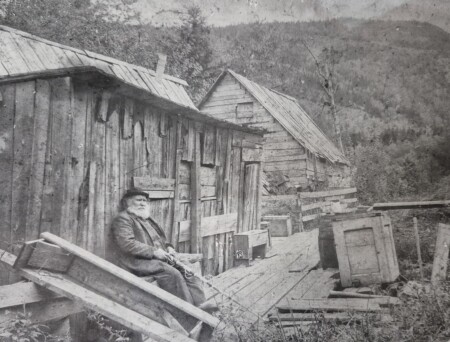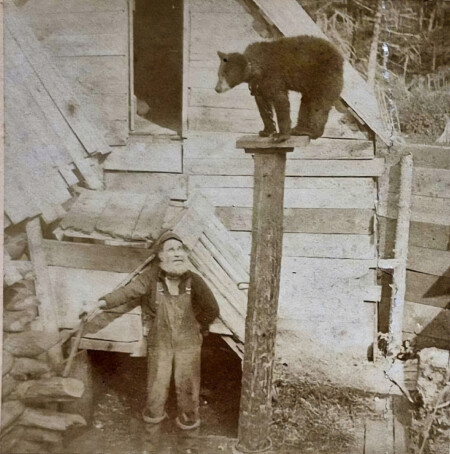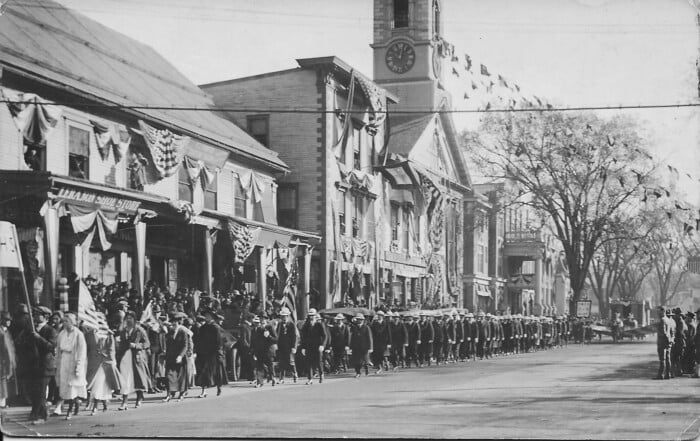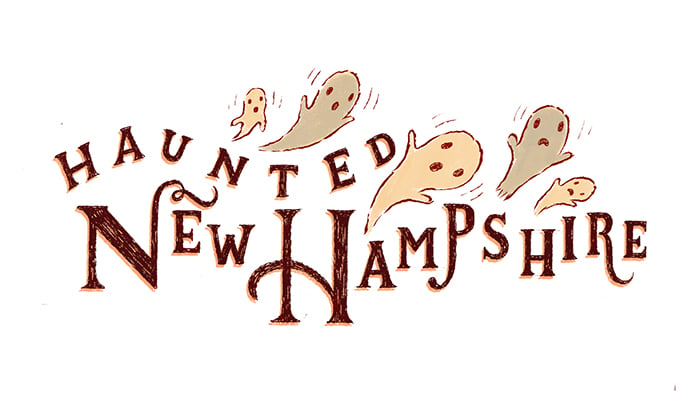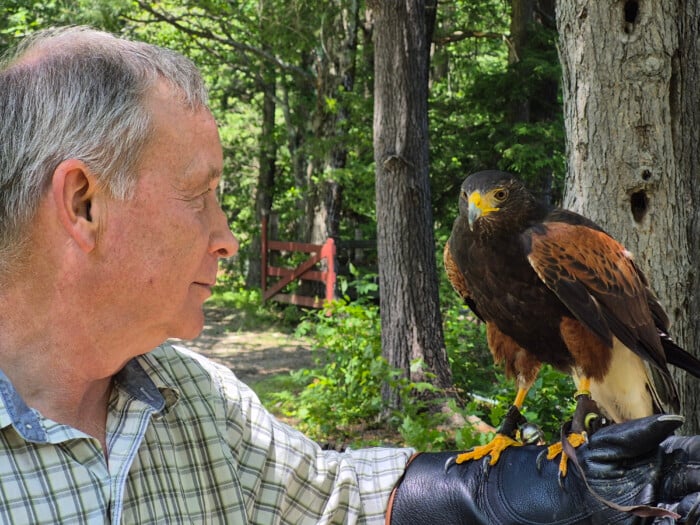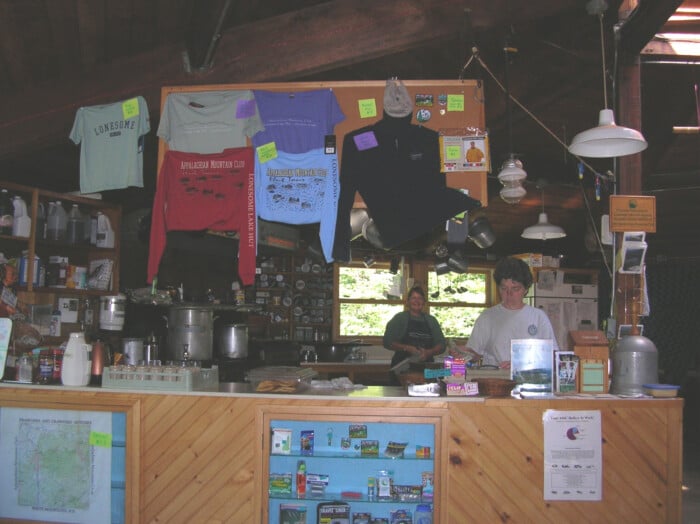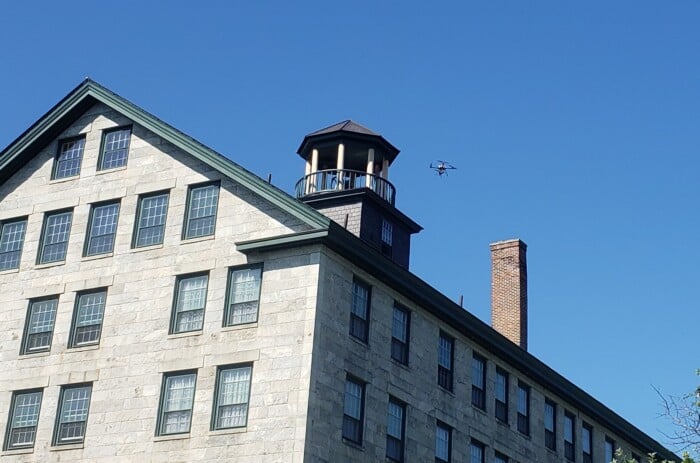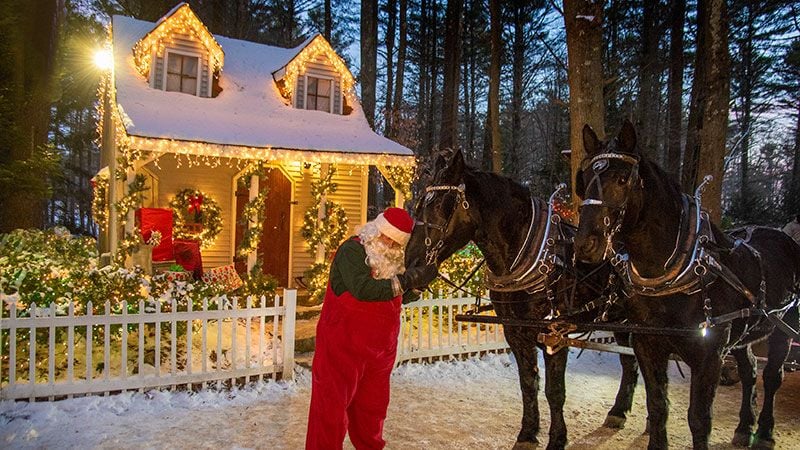The Hermit of Crawford Notch: Investigating the Legend of English Jack
English Jack told tales, trained bears and created puzzling walking sticks
I’m holding an unusual walking stick created by a White Mountain hermit who led an adventurous, yet tragic, life. The walking stick has many long curly tendrils interlaced around the hilt, and it has me wondering, how did he do that? The year 1900 is carved into the handle, so unless the carver was playing a trick on someone, this cane is 125 years old and would have some tales to tell, if it could talk.
I’m at Clark’s Bears in Lincoln, and although they are closed for the season, Maureen Clark graciously agreed to meet with me and show me their memorabilia display about “English Jack, The Hermit of Crawford Notch.” In addition to this walking stick, there are artifacts gathered from the hermit’s humble abode and some grainy black-and-white photos that provide a peek into the hermit’s life. Some of these photos depict English Jack with a pet bear. Another shows Jack with a curly tendrilled walking stick, perhaps the same one I’m now holding. Clark’s display also includes a booklet written in 1891 by James E. Mitchell entitled, “The Story of Jack.”
English Jack’s real name was Jack Vials, born about 1827, likely in London, England. Not a lot is known about his early life, but “The Story of Jack” says that at age 12, he was a barefoot homeless orphan, wandering the seaport docks looking for a job. He met a sea captain named Simmonds, who brought Jack home to live with his wife and daughter. For the next eight years, Capt. Simmonds and Jack sailed all over the world, and Jack grew into an able-bodied sailor. Along the way he fell in love with Simmonds’ daughter, Mary.
Disaster struck for Simmonds and Jack while sailing in the Indian Ocean. Their ship was caught in a hurricane and wrecked upon a small deserted island. Of the 42 souls on board, only 13, including Simmonds and Jack, survived. Food on the island was scarce, and the men survived primarily on snakes, frogs, crabs and snails. For almost two years, the sailors existed on the island but perished one by one. Jack had the sad task of burying his shipmates including Simmonds, who had been like a father to him.
Eventually three survivors were rescued by a passing ship, but Jack’s two remaining shipmates died before reaching England, leaving Jack the sole survivor. Jack bore the burden of telling Simmonds’ daughter, Mary, of the death of her father. He found her living in a workhouse and learned her mother had passed away while he and Simmonds were stranded on the island. Jack took Mary out of the workhouse and paid for her to attend boarding school, promising to return in a year and marry her. He then set sail on a ship for Hong Kong, planning to earn money to start their married life together. When Jack returned, he was crushed to learn that Mary had died in his absence.
With his heart broken and not caring if he lived or died, Jack joined the British Navy and sought out dangerous assignments. He fought in the Crimean War and other battles all over the world. Perhaps he fought slavers in Africa and may have served on a rescue ship freeing ice-trapped explorers in the frozen Arctic.
In the early 1870s, Jack decided to change his life, leave his sad memories behind and start a new life somewhere far from London. He took a job in New Hampshire’s White Mountains building the Portland and Ogdensburg railroad through Crawford Notch. When the project finished, Jack decided to remain in the area. With the completion of this railroad, grand hotels started opening, welcoming visitors and wealthy summer guests.
From scavenged boards, Jack built a ramshackle shanty in the woods near the Crawford House and not far from the railroad depot. He discovered that tourists from the cities were curious to meet colorful mountain characters, so he played the part. Jack erected signs that pointed out the path to his hermit home and then welcomed visitors, sold them souvenirs, and entertained them with his trained bear and tales of seafaring days. Legend says he also won wagers with the tourists, betting them he could eat a frog whole or bite the head off a snake.
As Jack aged, he spent the winters living with families in Twin Mountain but returned to his hermit home every summer. The families he roomed with remember him as having a kind heart and generous spirit, often giving candy and coins to children and gifting larger amounts to orphans or others in need.
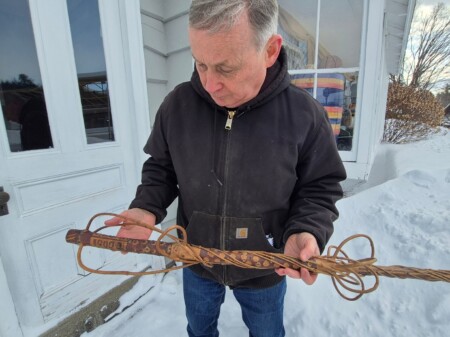
An English Jack walking stick with “Flume” carved into the handle on one side and the year “1900” carved into the other side.
English Jack is buried in the Straw Cemetery in Carroll. The inscription on his headstone reads: “John Vials — The Hermit of Crawford Notch,” and indicates he died on April 24, 1912, at 85 years of age. Other sources suggest his name may have been Jack Vialls, John Viles, Wailes, Niles or Nalls, and that he may have been a few years older, putting his age closer to 90 when he died. Whatever his true age and name, English Jack was known and loved by the area residents who raised the funds for his burial plot.
The unusual walking stick I’m now holding was made by Jack to sell to visitors. I’m still puzzled as to how he was able to bend and weave these tendrils into their curly position. My guess is that he may have worked on each walking stick while it was still a live and growing young sapling. Perhaps he kept track of its location in the woods and returned to it each spring to bend and weave the supple new growth. After several years, he would cut down the sapling with its entangled branches and create a unique walking stick from it.
I’m guessing at this — only “The Hermit of Crawford Notch” really knows how he made these walking sticks, and he won’t be revealing his secret or making any more. If you want to see one, plan to visit Clark’s Bears after they open.
